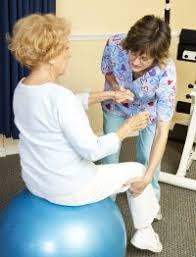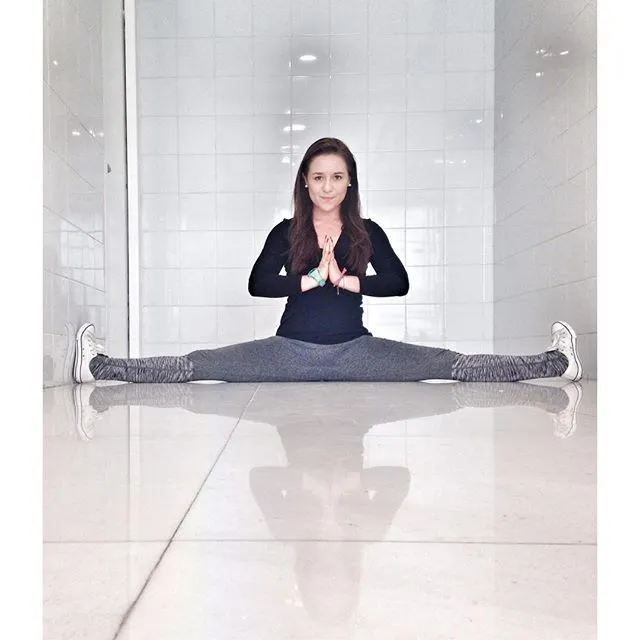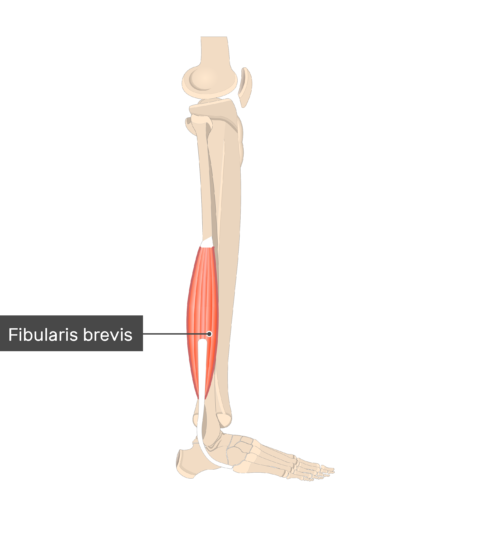Balancing Exercise in Paralysis: A Comprehensive Approach in Physiotherapy
Introduction
Balancing exercises play a pivotal role in the rehabilitation of paralysis patients, addressing the unique challenges faced by individuals with conditions such as Hemiplegia, Paraplegia, Cerebellar Ataxia, and Quadriplegia.
Physiotherapists employ a holistic approach, categorizing balancing exercises into three essential types:
- Supported Balanced
- Static Balance
- Dynamic Balance.
Additionally, these exercises are meticulously assessed in three key positions:
- Sitting
- Standing,
- Walking.
This article explores the significance of balancing exercises and their tailored application in the rehabilitation of paralysis patients.
Supported Balanced Exercises
In paralysis rehabilitation, supported balancing exercises serve as the foundation for restoring stability. These exercises often begin in a sitting position, utilizing supportive structures such as chairs or parallel bars.
The physiotherapist focuses on strengthening the patient’s core muscles, gradually progressing to standing positions with the aid of assistive devices. This phase is crucial for building confidence, establishing a stable base, and preparing the patient for more challenging balance activities.
Static Balance Exercises
Static balance exercises involve maintaining stability without significant movement. Physiotherapists assess patients’ ability to sustain balance while sitting, standing, or walking without external support.
In a sitting position, exercises may include weight shifting and controlled movements to improve stability. Progressing to standing positions, patients work on maintaining equilibrium during tasks like tandem standing or single-leg stance.
These exercises not only enhance muscle control but also promote sensory awareness, which is crucial for balance.
Dynamic Balance Exercises
Dynamic balance exercises are designed to challenge patients by incorporating controlled movements. Physiotherapists focus on activities that mimic real-world scenarios, requiring coordinated efforts to maintain balance.
In sitting positions, patients may engage in activities like reaching for objects or rotating their upper body. Standing dynamic balance exercises include weight-shifting drills and controlled swaying movements. Walking positions involve gait training with an emphasis on coordinated steps and weight transfer.
Assessment in Sitting, Standing, and Walking Positions:
Physiotherapists employ a systematic approach to assess the balancing abilities of paralysis patients in various positions. In the sitting position, assessments may involve observing the patient’s ability to maintain an upright posture, detect any asymmetry, and evaluate trunk control.
Standing assessments focus on weight distribution, postural alignment, and the ability to resist external forces.
Walking assessments encompass gait analysis, step length, and the overall quality of movement.
Tailoring Treatment Plans
Based on the comprehensive assessment of balancing exercises in different positions, physiotherapists tailor individualized treatment plans for paralysis patients. Progression through supported balanced exercises, static balance exercises, and dynamic balance exercises is carefully calibrated to the patient’s abilities.
The goal is to gradually transition the patient from dependence on external support to achieving functional independence in daily activities.
Balancing exercises in paralysis rehabilitation follow a systematic progression to help patients regain stability and functionality. Physiotherapists employ a staged approach, starting with Supported Balanced exercises and advancing through Static and Dynamic Balanced exercises in various positions – sitting, standing, and walking.
This article explores the step-by-step journey of a paralysis patient as they progress through each stage of balancing exercises.
How to Achieve Sitting Balance in Paralyzed Patient?
Supported Sitting Balance Exercises:
In the initial stages of rehabilitation, patients with paralysis often begin with Supported Sitting Balance exercises. These exercises involve the use of supportive structures such as chairs or parallel bars.
Physiotherapists focus on gradually reducing support, encouraging patients to engage their core muscles. As the patient gains confidence and strength, the exercises evolve from fully supported to partially supported, paving the way for a transition to Static Sitting Balance exercises.
Static Sitting Balance Exercises:
Once the patient achieves a certain level of stability in supported sitting positions, the physiotherapist introduces Static Sitting Balance exercises. These exercises challenge the patient to maintain equilibrium without significant movement.
Examples include weight shifting, controlled movements, and reaching exercises. The goal is to enhance muscle control and sensory awareness, preparing the patient for the next phase – Dynamic Sitting Balance exercises.
Dynamic Sitting Balance Exercises
As patients progress, dynamic movements are introduced in sitting positions. These exercises involve controlled rotations, lateral movements, and reaching activities. The focus is on challenging the patient’s ability to coordinate movements while maintaining balance. Gradually increasing the intensity of dynamic sitting exercises allows patients to further develop their balance skills, paving the way for the transition to standing positions.
How to Achieve Standing Balance in Paralyzed Patients?
Supported Standing Balance Exercises
In the standing position, patients initially engage in Supported Standing Balance exercises. This involves the use of assistive devices or manual support to ensure stability.
Physiotherapists work on weight distribution, postural alignment, and the patient’s ability to resist external forces. Over time, support is gradually reduced as the patient gains confidence and strength, moving towards achieving a Static Standing Balance.
Static Standing Balance Exercises
Static Standing Balance exercises focus on maintaining stability without significant movement. Patients work on tasks like tandem standing, single-leg stance, and controlled weight-shifting.
These exercises build on the foundation laid in supported standing positions, promoting muscle control and sensory awareness critical for balance. Once patients demonstrate proficiency in static standing, the transition to Dynamic Standing Balance exercises begins.
Dynamic Standing Balance Exercises
Dynamic Standing Balance exercises introduce controlled movements in the standing position. Patients engage in activities that mimic real-world scenarios, such as reaching, swaying, and weight-shifting.
Physiotherapists carefully progress the intensity of dynamic exercises, challenging the patient’s ability to coordinate movements while maintaining balance. This stage sets the groundwork for the final phase – Balancing Exercises in Walking Positions.
Balancing Exercises in Walking Positions
Walking balance is a critical component of paralysis rehabilitation, requiring a tailored approach to address the unique challenges faced by patients with conditions such as Hemiplegia, Paraplegia, and Quadriplegia.
Physiotherapists employ a three-stage progression, starting with Supported Walking, advancing to Static Walking Balance, and culminating in Dynamic Walking Balance.
Supported Walking:
The initial stage of walking balance rehabilitation often involves Supported Walking. Patients may use assistive devices, such as walkers or canes, to provide stability and support.
Physiotherapists focus on establishing a rhythmic and coordinated gait, ensuring weight-bearing is distributed appropriately. As patients gain confidence and strength, the amount of support is gradually reduced, setting the stage for the transition to Static Walking Balance exercises.
Supported Walking Training
- Patients begin with support from assistive devices.
- Emphasis on establishing a rhythmic and coordinated gait.
- Gradual reduction of support as strength and confidence increase.
Static Walking Balance
Static Walking Balance exercises mark the intermediate stage of walking rehabilitation. Patients, having gained proficiency in supported walking, now focus on maintaining stability without significant movement.
Physiotherapists introduce tasks such as walking in a straight line, turning, and pausing during the gait cycle. The emphasis is on enhancing control and balance during static activities, preparing the patient for the final stage of rehabilitation – Dynamic Walking Balance.
Static Walking Balance Training
- Focus on maintaining stability during walking without significant movement.
- Introduction of tasks like walking in a straight line and turning.
- Emphasis on control and balance during static activities.
Dynamic Walking Balance
The pinnacle of walking balance rehabilitation is Dynamic Walking Balance. At this stage, patients not only walk independently but also engage in dynamic activities while walking. Physiotherapists introduce challenges such as turning, looking around, and incorporating hand-eye coordination tasks like catching a ball.
Dynamic Walking Balance exercises simulate real-world scenarios, enhancing the patient’s ability to navigate various environments with confidence and stability.
Dynamic Walking Balance Training
- Patients walk independently and engage in dynamic activities.
- Introduction of challenges like turning, looking around, and hand-eye coordination tasks.
- Simulation of real-world scenarios to enhance confidence and stability.
Conclusion
The step-by-step progression of balancing exercises in paralysis rehabilitation reflects a patient-centered approach, systematically building strength, stability, and confidence. Physiotherapists play a crucial role in guiding patients through each stage, tailoring exercises to individual needs.
This comprehensive approach ensures a gradual and sustainable improvement in balance, empowering paralysis patients to regain functional independence and enhance their quality of life.








Balancing Exercise is my weakness as a Physiotherapist, After Reading This, now i am able to assess the Balance related problems and create effective treatment plans!